The History of the World in 25 Cities
Hind MoutaoikiIR&D Manager
Thu Mar 06 2025

In 'The History of the World in 25 Cities', we embark on a journey through time, exploring the pivotal cities that have shaped our world. From the ancient walls of Jericho to the bustling streets of modern Tokyo, each city tells a unique story of human development and cultural evolution. This article delves into the significance of these cities, highlighting their contributions to history and society, while also considering what future cities might look like.
In 'The History of the World in 25 Cities', we embark on a journey through time, exploring the pivotal cities that have shaped our world. From the ancient walls of Jericho to the bustling streets of modern Tokyo, each city tells a unique story of human development and cultural evolution. This article delves into the significance of these cities, highlighting their contributions to history and society, while also considering what future cities might look like.
Key Takeaways
- Jericho is one of the oldest inhabited cities, dating back to around 8500 BCE.
- Cities like Athens and Rome were crucial in the development of democracy and governance.
- Modern cities such as Tokyo and New York represent the peak of urbanisation and cultural fusion.
- Historical cities provide insights into the lives of people in different eras.
- Future cities will likely evolve with technology and sustainability in mind, including places like Neom and Trojena.
1. Jericho
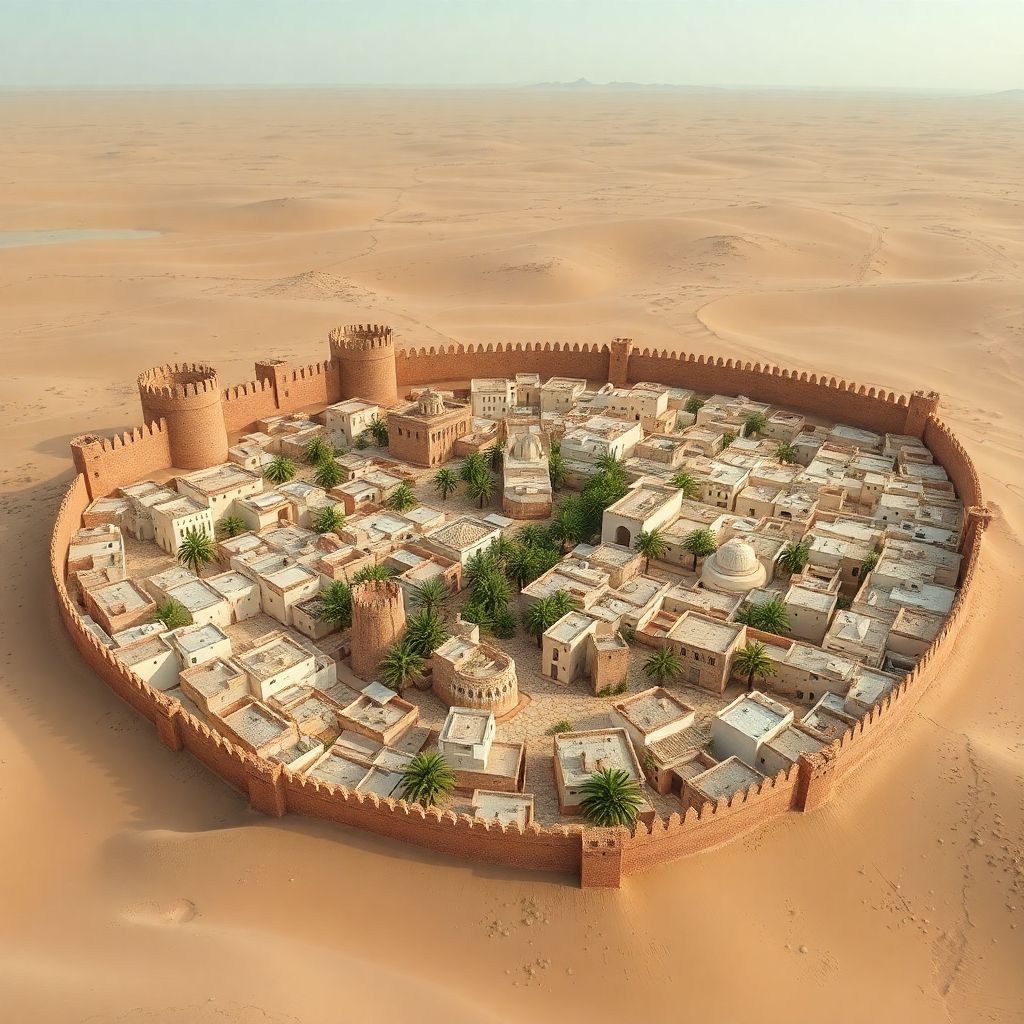
Jericho is recognised as one of the oldest continuously inhabited settlements in the world, with its roots tracing back roughly 10,000 years. Archaeological discoveries here reveal that early inhabitants built modest walls, offering a glimpse into the ingenuity of these ancient communities. Evidence from the site suggests that even at this early stage, people were beginning to organise themselves and adapt to a challenging environment.
Ancient records underscore Jericho’s place as a foundational piece of human history.
Key points about Jericho include:
- The remains of fortifications provide insights into early construction methods.
- Artefacts unearthed on-site detail the daily lives and survival strategies of its residents.
- Early agricultural practises were central to the community’s longevity.
Jericho’s long history not only illustrates the survival instincts of early settlers but also sets the stage for understanding the evolution of urban life over millennia.
The following table summarises some of the critical attributes of this ancient city:
Attribute | Details |
| Age | c. 10,000 years |
| Fortification Remains | Indicative of early defensive methods |
| Archaeological Importance | High – foundational to early urban studies |
This concise overview of Jericho invites a deeper look into how early human settlements have shaped our civilisation today.
2. Memphis
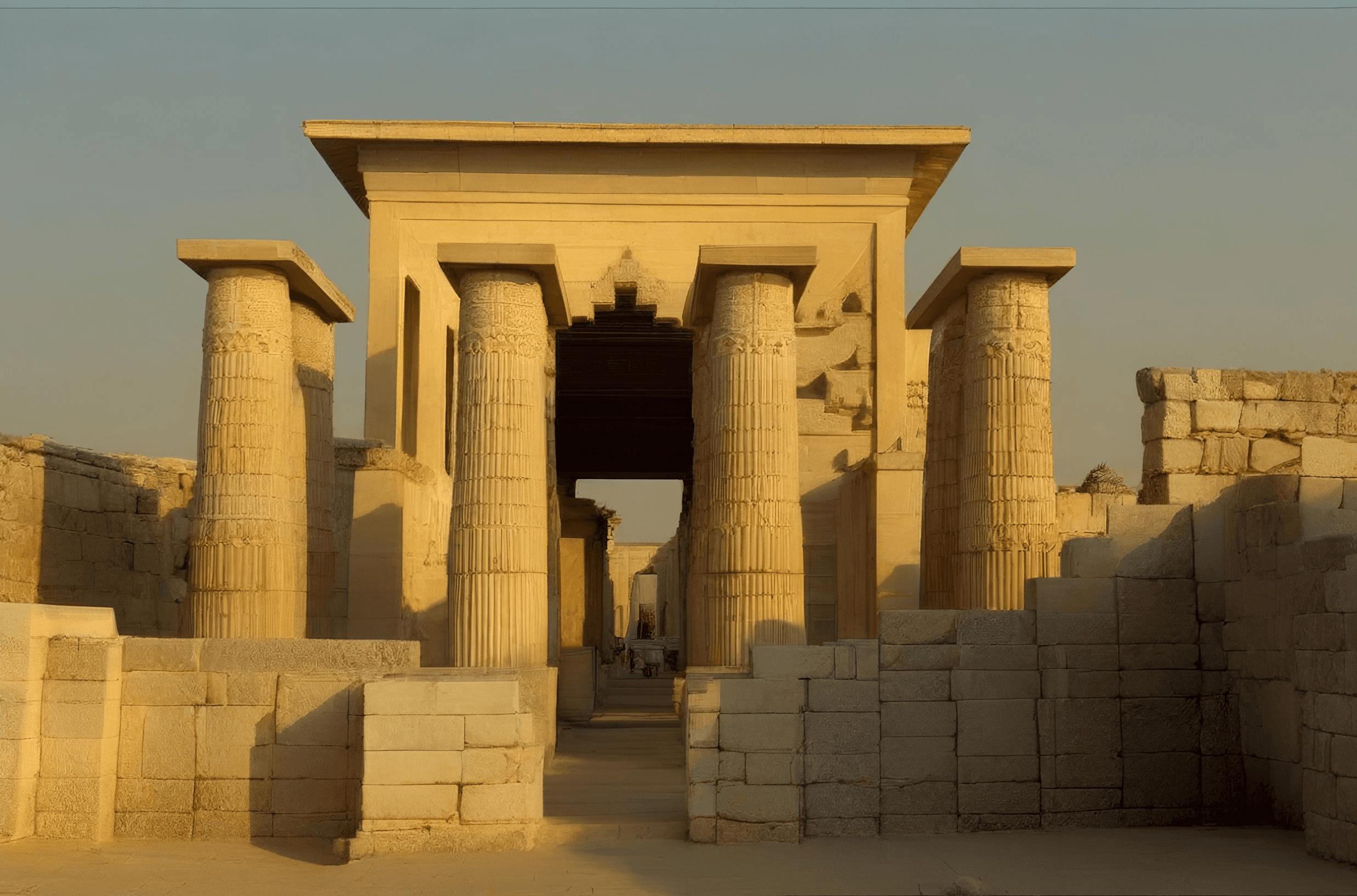
Memphis was one of the great cities of ancient times, noted for its distinctive layout and the important role it played in its region. It earned renown through its well-organised temple districts and the hardworking people who maintained them. In its heyday, Memphis stood as a vital centre in its era, contributing much to the cultural and social framework of the time.
The city was structured with care, and several elements helped shape its character:
- A carefully planned religious district with temples that symbolised spiritual life.
- Residential areas that housed a community of skilled craftsmen and tradespeople.
- Marketplaces which facilitated the exchange of goods and services.
Below is a table summarising key aspects of ancient Memphis:
Aspect | Details |
| Urban Design | Organised districts and broad avenues |
| Economic Role | Commerce and trade hubs |
| Cultural Impact | Significant religious and social influence |
Memphis continues to intrigue historians and archaeologists, offering insights into early urban culture and the daily lives of its inhabitants. Its legacy lives on through the stories and remnants left behind, which still capture the imagination of many.
3. Athens
Athens stands as one of the most historically rich cities in Europe. Its legacy as the cradle of classical thought and democracy is still visible in its architecture and cultural evolution. The city has notably shaped modern ideas of governance and society.
Key historical elements and attractions include:
- The Parthenon, a splendid temple dedicated to the goddess Athena.
- The Ancient Agora, once a bustling centre for commerce and public debate.
- A variety of public spaces that reflect the city’s long-standing social and political traditions.
Below is a table summarising some of Athens' prominent landmarks:
Landmark | Approximate Construction Period |
| The Parthenon | 447-432 BCE |
| Ancient Agora | 6th century BCE |
| Theatre of Dionysus | 5th century BCE |
A stroll through Athens often feels like stepping back in time, with every corner echoing tales of ancient wisdom and a society that persevered through the ages.
The city is also making strides in modern urban development, integrating sustainable practises such as eco-friendly planning into its growth.
4. Xianyang
Xianyang was once the centre of power in ancient China, serving as the capital during the Qin dynasty. This city played an important role in shaping early urban life in the region. Its legacy in urban design reflects the innovative spirit of its time.
Though no original map exists to show its layout, modern study and archaeology have revealed much about its planning. Xianyang remains a subject of fascination, not only for historians but also for those interested in simple, effective urban planning, much like ideas seen in smart city ideas.
Key points about Xianyang:
- It was a centre for administration and control during the Qin era.
- Its design has influenced later Chinese urban developments.
- Recent archaeological discoveries continue to shape our understanding.
Below is a quick look at some basic information:
Aspect | Detail |
| Era | Qin dynasty |
| Function | Imperial capital |
| Urban Layout | Advanced for its time |
Xianyang's role in history is a reminder of how even ancient urban planning can inform today’s practises. Scholars and planners alike find its methods relevant, shedding light on effective design that still echoes in modern cities.
The legacy of Xianyang shows that even cities lost to time have lessons to offer. Its historical value endures, connecting the past with ideas for future development.
5. Rome
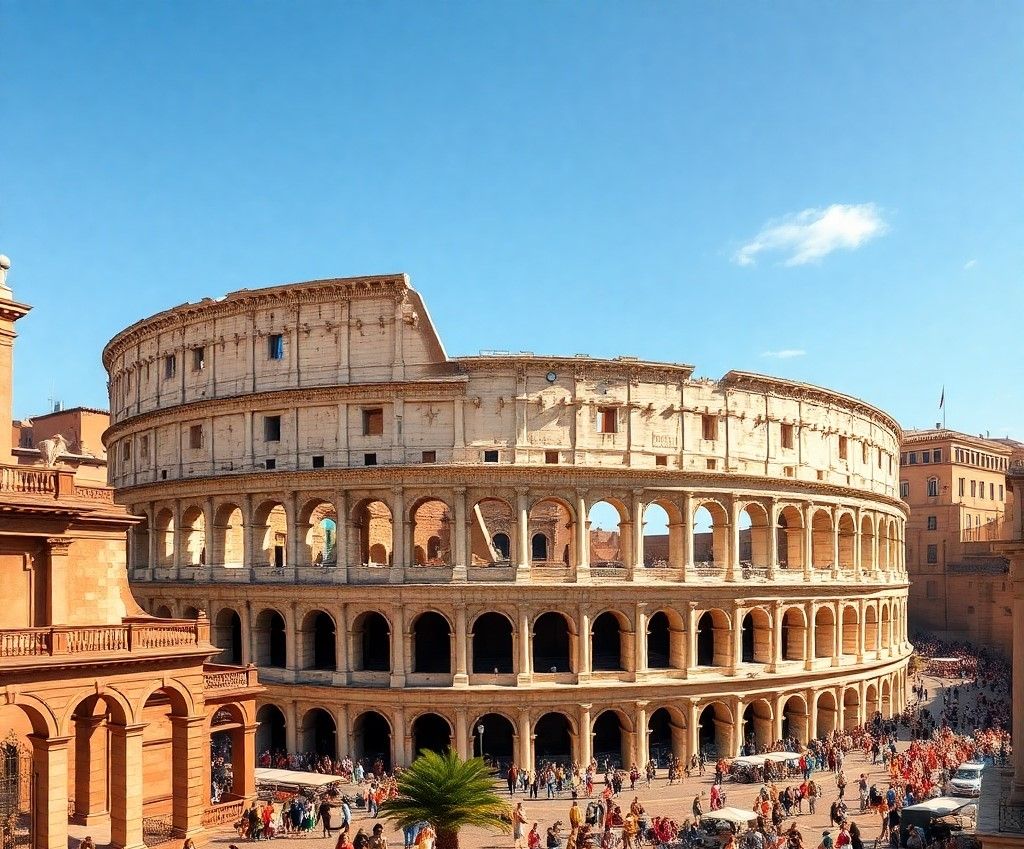
Rome is a city with a long history that continues to influence modern society. The city carries the weight of ancient traditions, evident in both its art and its infrastructure. Rome served as the nucleus of an expanding empire and set a model for cities in the western world.
Key points to know about Rome include:
- Engineering marvels like roads and aqueducts that have withstood the test of time.
- Early forms of republican government that laid the groundwork for modern legal systems.
- A rich cultural heritage that has shaped art, literature, and daily life over centuries.
Below is a brief summary of Rome's contributions:
Aspect | Contribution |
| Architecture | Innovations in construction and urban design |
| Military | Organised legions and systematic strategy |
| Civic Life | Development of governance and public infrastructure |
Rome’s enduring legacy is visible not only in its ruins but also in the continued influences on modern urban planning and public administration.
6. Constantinople
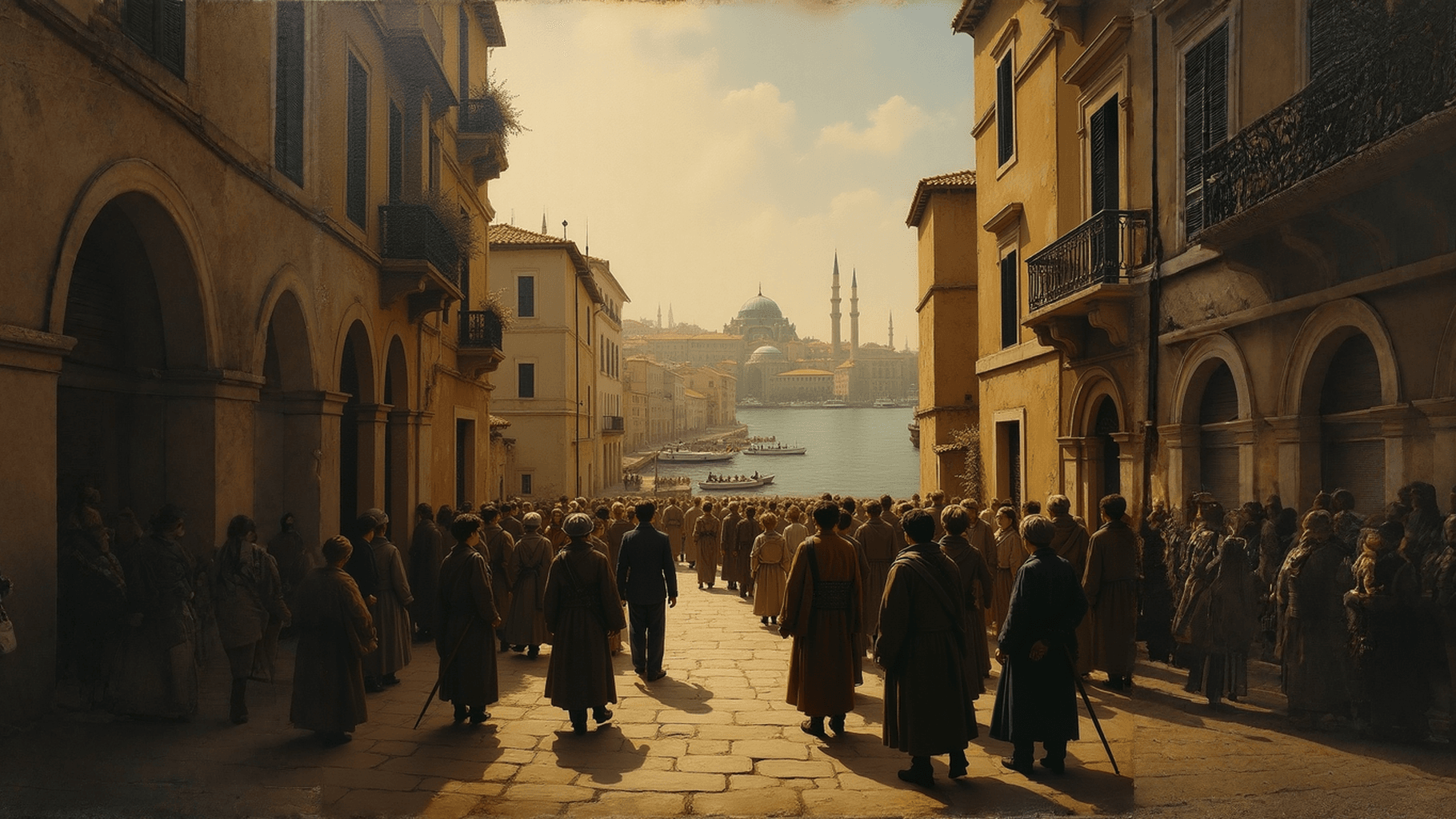
Constantinople sits at the crossroads of Europe and Asia and has been a centre of political, military, and economic activity for centuries. Renowned for its blend of cultures and traditions, the city has been a pivotal link between the West and the East. Its strategic location on the Bosphorus has made it a coveted prize for many empires.
This historic city was founded in 330 AD and became the capital of the Eastern Roman (Byzantine) Empire, later evolving into the heart of Ottoman power. Not only did it serve as an administrative and commercial hub, it also became a melting pot where art, architecture, and ideas merged to create a unique cultural tapestry.
Key Historical Insights
- The establishment of Constantinople marked a deliberate shift of power to the East.
- It boasted impressive architectural feats, including massive walls and grand public structures.
- The city played host to significant religious and political councils that shaped the course of European and Middle Eastern history.
Below is a succinct overview of some structured details about Constantinople:
Attribute | Detail |
| Founded | 330 AD |
| Peak Population | Over 500,000 |
| Location | On the Bosphorus |
This city’s layered history offers a glimpse into the evolution of civilisation over time. The interplay between various cultures and eras is evident in the myriad monuments and records that survive today, reflecting both the triumphs and tribulations of those who once called it home.
Overall, Constantinople remains a significant chapter in the world’s urban and cultural development, continuing to intrigue historians and visitors alike.
7. Baghdad
Baghdad was established in the 8th century as the capital of the Abbasid Caliphate. It quickly became a centre for knowledge, trade, and art. Although modern Baghdad has grown and changed, the history is still visible in its streets and monuments.
Baghdad's legacy as a hub of learning and culture paved the way for generations beyond.
Some key points about Baghdad include:
- It served as a meeting point for scholars who translated and preserved ancient works.
- It was a vibrant centre of art and literature during its golden age.
- It is now a major urban area with growth that reflects both its traditions and modern challenges, with a population approaching seven million.
Below is a brief table summarising the population estimates during different eras:
Era | Estimated Population |
| Abbasid Golden Age | ~1,000,000 |
| Modern Era | ~7,000,000 |
Baghdad's rich past is not just in books; a walk through its old quarters reveals layers of history that continue to inspire curiosity and respect.
Its blend of tradition and modernity makes it a unique example of how cities evolve over time while holding on to the spirit of their origins.
8. Jórvík
Jórvík, the name given by the Norse to what later became York, played a significant role during the Viking period in Britain. This city grew from a small settlement into a bustling hub where trade and craft flourished. Jórvík stands as a key example of Viking urban expansion, blending martial traditions with emerging commerce in a distinctly evolving environment.
Historical records tell us that Jórvík was not just a military outpost; it was a centre for artisans, marketers, and traders. Its location allowed the settlement to control river trade routes, giving it an edge in commerce. The influence of this period is still visible in the cultural makeup and archaeological remains found in the region.
Below is a table summarising some attributes of Jórvík during its peak years:
Era | Notable Features | Common Trade Items |
| Early 9th | Initial Viking settlement | Furs and timber |
| Mid 10th | Expanding urban centre | Wool and metalwork |
| Late 10th | Cultural integration | Spices and crafts |
The story of Jórvík can be explored through several facets:
- Its strategic location on the River Ouse made it a linchpin in regional trade.
- The merging of Viking traditions with local Anglo-Saxon customs gave it a unique cultural identity.
- Ongoing archaeological discoveries continue to reveal everyday life in the city during its peak.
Modern digital tools, such as immersive travel, have spurred new interest in exploring the history and legacy of this notable settlement.
Jórvík offers a captivating glimpse into the past, where historical narratives and modern research meet, enriching our understanding of early urban development in Britain.
The revival of interest in these early cities also helps us appreciate how early communities were connected to broader European trade and cultural exchange.
9. Benin City
Benin City stands as a vivid reminder of West Africa’s rich past and resilient spirit. Steeped in history, the city has long been a central hub of trade, art, and tradition. This city remains a testament to centuries of cultural achievements and lasting legacy. It is also known for its impressive earthworks and nuanced social structures, which helped lay the foundation for one of Africa’s most influential kingdoms.
In several ways, Benin City can be appreciated through its key historical features:
- Ancient origins rooted in indigenous traditions.
- The forging of the Oba Kingdom that contributed to regional governance.
- A vibrant legacy of art and craftsmanship that continues to inspire contemporary culture.
One may look at the historical timeline in a succinct table below:
Event | Approximate Period |
| Founding of the Oba Kingdom | 11th Century |
| Peak of the Benin Empire | 15th - 16th Century |
| Colonial Influence and Resilience | 19th Century |
Many aspects of Benin City, from its organised administrative systems to its acclaimed artistic heritage, illustrate the enduring relevance of historical urban centres in shaping modern communities.
Additionally, discussions around urban evolution, such as in urban history, offer insights into how traditional practises influence today's city planning and community life. This platform helps explore further connections between past and present, making the city’s story even more engaging.
Culture has a subtle but enduring impact on how communities remember and reinvent themselves, and Benin City remains a prime example of that continuing narrative.
10. Tenochtitlán
Tenochtitlán was the remarkable capital of the Aztec empire, built atop a series of islands in the middle of a large lake. Founded in the early 14th century, it grew rapidly into a bustling and complex city thanks to its sophisticated system of canals, causeways, and aqueducts.
The city was not only a political and economic hub but also a centre of rich cultural and ceremonial life.
Key characteristics of Tenochtitlán include:
- Its ingenious urban planning, which allowed residents to navigate easily through waterways and streets.
- A diverse population supported by multiple forms of trade, agriculture, and craft production.
- A network of marketplaces that buzzed with daily commerce and social interactions.
A brief snapshot of Tenochtitlán in numbers:
Feature | Details |
| Foundation Year | c. 1325 |
| Main Inhabitants | Aztec people |
| Key Infrastructure | Canals & Causeways |
Tenochtitlán remains an enduring symbol of pre-Columbian ingenuity. Its layout and public spaces reflect a society that valued community and civic planning, elements that continue to influence the modern urban landscape of Mexico City.
Overall, the history of Tenochtitlán offers an engaging insight into the dynamics of a civilisation that, despite its eventual fall, significantly shaped the course of history in the New World.
11. Granada
Granada, nestled in the foothills of southern Spain, offers a rich peek into a past where diverse cultures met and mingled. Once the epicentre of the last Islamic state on the Iberian Peninsula, the city bears witness to centuries of change and adaptation. The echoes of Moorish traditions can still be felt walking its narrow lanes and viewing its intricate buildings.
Granada stands as one of Spain’s most intriguing cities, where history is interwoven with a vibrant modern life.
The Alhambra serves as a striking reminder of the city’s past, blending art and engineering into a unique architectural gem.
Below is a brief overview of key milestones in Granada’s history:
Year | Event | Significance |
| 711 | Moorish invasion begins | Introduction of Islamic culture |
| 1238 | Nasrid dynasty established | Flourishing of art and architecture |
| 1492 | Fall of Granada to Christian forces | Marking the end of Islamic rule in Spain |
Some notable highlights of Granada include:
- A blend of Christian and Islamic artistic influences.
- Its well-preserved historical quarters and palatial structures.
- Continued importance as a cultural and educational hub in modern Spain.
The layered history of Granada is like reading an old, well-loved book—each chapter revealing a new story, every stone echoing past lives and events.
12. Beijing
Beijing is a city of ancient legacy and modern progress. Spanning more than three millennia, it has evolved from a modest settlement into one of the most influential urban centres in history.
Beijing embodies a bridge between ancient empires and modern achievements. Its long past is marked by remarkable transformations—from serving as a key political capital during successive dynasties to becoming a symbol of modern innovation and international exchange.
Key milestones in Beijing's history include:
- Serving as the nucleus for imperial administration during the Yuan and Ming dynasties.
- The construction of monumental sites such as the Forbidden City.
- Hosting major global events like the 2008 Olympic Games.
Below is a brief table summarising some notable periods in Beijing's development:
Period | Key Event | Notes |
| Yuan Dynasty | Became a political centre | Marked the start of imperial recognition |
| Ming Dynasty | Construction of the Forbidden City | Established cultural identity |
| Modern Era | 2008 Olympic Games | Projected Beijing onto the global stage |
Beijing’s enduring heritage underscores its role in linking the traditions of the past with the innovations of the present, inviting visitors and residents alike to explore its layered story.
The city continues to be a focal point of cultural and political life, where every street corner and ancient wall hints at a story that stretches back in time.
13. Venice
Venice is a captivating city with a storied past and distinct architecture shaped by centuries of trade and turmoil. Its beauty and history continue to inspire artists and travellers alike. The city's maze of canals and historic palazzi make it a notable stop for anyone interested in exploring hidden gems of Italy.
Venice presents a rich cultural legacy that is reflected in several key aspects:
- Intricate canal networks and historic bridges
- Majestic churches and basilicas showing mediaeval influences
- A longstanding tradition of art, craftsmanship, and trade
Below is a table summarising some fundamental features of Venice:
Feature | Detail |
| Founding Era | Emerged around the 5th century BCE |
| Peak Trade Period | 14th to 16th centuries |
| Architectural Style | Byzantine and Renaissance influences |
Venice’s unique urban layout and relative isolation have allowed it to develop a distinctive identity that continues to fascinate visitors and historians alike.
14. Delhi
Delhi is a city that has seen a lot over the centuries. Its past runs deep, from early settlements to the rise and fall of major empires. The city has been a centre for trade, politics and art, and its streets still echo the vibrant history of its people.
Delhi has always been a melting pot of diverse cultures and traditions. Over time, it has welcomed changes and challenges, reinventing itself through each era.
Some key elements of Delhi's history include:
- Early urban development and trade routes that laid its foundation.
- The rise of the Delhi Sultanate and later, the Mughal Empire, which brought an historic flair in art and architecture.
- The transition through British rule, eventually leading to modern-day India.
Below is a brief overview of the city’s timeline:
Period | Ruler/Empire | Notable Features |
| Early History | Local kingdoms | Foundation of urban trade and craft |
| Mediaeval Era | Delhi Sultanate, Mughal | Stunning buildings and rich culture |
| Colonial Era | British Raj | Modern infrastructure planning |
Delhi’s evolution is a clear reminder of how urban centres can continuously reshape themselves, blending the old with the new while preserving memories of times gone by.
Today, Delhi remains a vibrant hub, offering a blend of age-old history and the rhythms of modern life. Its streets, monuments, and public spaces make it a living museum where every corner tells a story.
15. Cuzco
Cuzco, once the administrative and religious hub of the Inca civilisation, is a city where history is visible in every stone and street. Situated high in the Andes, it was the beating heart of an empire that left a lasting legacy in the form of architectural wonders and cultural traditions. Cuzco remains a living archive of a civilisation that shaped an entire region.
Its streets mirror a blend of Incan ingenuity and Spanish colonial design, making it a fascinating study in contrast and continuity. Below is a brief look at how the city has evolved over time:
Era | Period | Notable Features |
| Incan | Pre-1533 | Served as the central node for administration and religion |
| Colonial | 1533 - 1821 | Introduction of European architecture alongside ancient designs |
| Modern | 1821 - Present | Cultural hub and gateway for tourism |
Some key aspects of Cuzco include:
- A series of ancient structures such as the Sacsayhuamán fortress and Qoricancha temple.
- A unique fusion of stonework dating back to the Incan era interwoven with Spanish influences.
- Annual festivals that highlight traditional music, dance, and rituals.
In quiet corners of the city, carefully preserved ruins and enduring traditions quietly recount tales of a robust past that continues to inspire both locals and visitors alike.
Today, Cuzco stands not only as a reminder of a rich historical tapestry but also as a vibrant community that honours its past while welcoming change. Its story is one of resilience and continuity, inviting everyone to step back in time and experience the grounds where history was made.
16. Amsterdam
Amsterdam is a city with a long history that mixes old world charm with modern life. Once a small fishing community, it grew into a bustling centre in the Dutch Golden Age thanks to trade, art, and innovative urban planning. Its canals, narrow houses, and rich cultural background make it a unique destination for those interested in history and urban evolution.
Amsterdam remains a living example of resilience and innovation through centuries of change. Alongside its picturesque waterways, the city is celebrated for:
- Its layered history from mediaeval times through modern developments
- A cultural scene that still honours its artistic heritage
- A reputation for social tolerance and progressive thinking
Below is a brief table highlighting some key historical milestones:
Year | Event |
| 1275 | First records of Amsterdam as a settlement |
| 1585 | Growth as a major trading port |
| 1672 | The city endures economic and political challenges |
Amsterdam’s past is wrapped in stories of trade, art, and everyday life that continue to shape its streets and people. The city’s legacy is not only seen in its architecture but also in the spirit of community and tradition that defines its character.
Today, the city still offers a rich tapestry of history, layered with modern influences that make it both educational and engaging to explore.
17. Sydney
Sydney stands out as a vibrant harbour city that has evolved considerably since its early days. From its rich Indigenous heritage to the arrival of British settlers, the city tells a story of transformation that is as intriguing as it is varied. Its lively waterfront and unique mix of history and modernity have always captured the imagination of visitors and locals alike.
The city's evolution can be seen through significant historical milestones. Here are a few key phases:
- The presence of Aboriginal communities long before European contact.
- The establishment of a penal colony and subsequent growth during the colonial period.
- Rapid development in the modern era, making it a bustling hub for trade, arts, and culture.
A glance at the data below provides a snapshot of its demographic growth:
Year | Estimated Population |
| 1788 | ~1,000 |
| 1850 | ~50,000 |
| 2020 | ~5,312,000 |
This table illustrates how Sydney has expanded over time while retaining elements of its early character.
Sydney’s journey from a small colonial outpost to a major global city is a narrative of change, resilience, and the blending of old and new elements. This mix of tradition and progress continues to define its streets and communities.
In addition, aspects of modern urban sharing are not lost here. Discussions around community sharing projects reflect how cities like Sydney and others draw inspiration from innovative cultures, fostering engagement and sustainable practises.
Furthermore, one might note that colonial influences still echo in the architecture and layout of several districts, offering visitors a chance to step back in time while enjoying contemporary comforts.
18. Paris
Paris remains a city of charm and enduring influence. Over centuries, it has evolved as a centre for art, literature, and political insight. Its streets echo a history that has seen revolutions, renaissance, and modern-day cultural flair.
- Celebrated landmarks such as the Eiffel Tower and the Louvre that attract millions each year.
- An intricate urban layout that shows centuries of architectural evolution.
- A blend of historic and contemporary life, from quaint cafés to bustling markets.
This city continues to inspire locals and visitors alike with its rich tapestry of stories.
A stroll along the banks of the Seine offers a quiet glimpse into the layered history of Paris, where every corner holds a memory of the past meeting modern life.
Below is a table that summarises some key details about Paris:
Attribute | Detail |
| Population | Approximately 2.1M |
| Area | 105 km² |
| Notable Feature | Renaissance roots |
The legacy of Paris is deep and continues to shape cultural narratives, making it a vibrant chapter in the history of the world.
19. London
London has a long and winding history, evolving from a modest settlement on the River Thames into a major global centre. Over the centuries, the city has witnessed many shifts that have shaped its streets and spirit. This city has endured many transitions and continues to influence modern culture and politics. Its legacy is visible in the mix of ancient landmarks and new architectural feats.
London's history can be seen through several key insights:
- Roman foundations that introduced road networks and public buildings.
- A hub of trade and early industry that spurred urban growth.
- A space for cultural revival which continues to inspire art and music.
London's layered past offers clear examples of change and continuity. The blend of tradition and innovation highlights its unique character and resilience.
Below is a concise table summarising important periods in London's development:
Period | Key Development | Notes |
| 16th Century | Emergence as a trade hub | Growth driven by commerce |
| 19th Century | Industrialisation | Rapid urban expansion |
| 20th Century | Modernisation and diversity | Cultural integration |
Additionally, for those interested in a comparative look, exploring capital city traits can provide further context on how similar characteristics play out in other historic cities.
20. Bangkok
Bangkok has always been more than just a modern capital; it’s a place where history and everyday life blend seamlessly. Originating as a modest trading post along the Chao Phraya River, the city has gradually turned into a bustling hub that mirrors the evolution of Thai society.
Here are a few points that mark Bangkok's development:
- It began as a small riverside village before expanding its reach as trade grew.
- The city hosts a mix of ancient temples and contemporary civic spaces.
- Its evolving urban landscape reflects a rich heritage and ongoing cultural exchanges.
Bangkok remains a centre of activity that reflects the passage of time.
The city’s growth can be seen through some straightforward data:
Period | Population Estimate | Key Milestone |
| Early 20th | 500,000 | Establishment as a trade node |
| Mid 20th | 2,000,000 | Rapid urban expansion |
| Late 20th | 6,500,000 | Boom in industrial growth |
Bangkok's ongoing transformation has drawn attention from various sectors, including events like the urban summit which focus on sustainable and smart urban planning.
Observing the layered history of Bangkok, one cannot help but appreciate how cultural influences and practical demands have shaped its identity over the years.
21. Saint Petersburg
Saint Petersburg was established in 1703 by Peter the Great, marking a turning point in Russian history. The city quickly became a centre for culture and politics. Over the years, it has transitioned from an imperial capital to a modern hub, all the while carrying a rich heritage that is visible in its grand architecture and numerous museums.
This city bears the mark of history, blending art, culture, and resilience.
Below are some key points summarising its journey:
- Founded as a window to the West
- Served as the imperial capital and later underwent significant changes
- Endured challenges during wars and revolutions, emerging into a vibrant modern city
Here is a brief table of important dates:
Year | Event |
| 1703 | Establishment by Peter the Great |
| 1917 | Onset of revolution affecting its role |
| 1941–1944 | The long and harsh Siege during WWII |
| 1991 | Transition after the Soviet era |
Saint Petersburg offers a unique glimpse into a layered past, where every street and building tells a story. Its evolution mirrors the broader changes in Russian society, making it a fascinating locale for both residents and visitors.
22. New York City
New York City has long been a centre of commerce and culture, known for its distinctive skyline and vibrant street life. Over the years, it has evolved into a melting pot of people, ideas, and traditions, which gives the city an optimistic spirit. Recent advancements in technology have also influenced urban living here, as the city explores smart cities solutions to improve efficiency in services and infrastructure.
A few key points about New York City include:
- A rich history spanning centuries, from its early days under Dutch colonisation to becoming a global metropolis.
- A diverse, multicultural population that has contributed greatly to its unique character and culinary scene.
- A dynamic economic environment driven by finance, arts, and technology.
Here is a quick overview of some quantitative aspects of the city:
Attribute | Value |
| Approx. Population | 8.4 million |
| Land Area | 783 km² |
| Year Founded | 1624 |
New York City stands as a melting pot of ideas and ambitions, shaping both its past and its continually evolving future.
Through its history and development, New York City remains a testament to resilience and reinvention, offering insights into the interplay of culture and modernisation.
23. Berlin
Berlin is a city with a story that spans centuries, marked by both hardship and renewal. Originally emerging in the Middle Ages, the city grew in importance during various eras and has since served as a backdrop for events that changed the course of history.
Berlin has been a witness to key moments that reshaped its identity over time.
A glimpse at some notable points in Berlin's past might include:
- Its founding and early development in the mediaeval period.
- Serving as a centre of power during the rise of Prussia and later the German Empire.
- The division during the Cold War with the iconic Berlin Wall, followed by a remarkable period of reunification.
Below is a brief timeline summarising important dates in Berlin's history:
Year | Event |
| 1871 | Became the capital of the newly formed German Empire |
| 1961 | The erection of the Berlin Wall begins |
| 1990 | The fall of the Wall and subsequent reunification |
Berlin stands as more than just a city. It is a place where history is not only preserved but continues to evolve as its people build on a rich legacy. The transformation, marked by both strife and triumph, is a testament to the enduring spirit of Berlin.
24. San Francisco
San Francisco is a city that has grown from a modest town into a centre of culture and change. The city has seen waves of different communities shaping its identity, from the rugged days of the Gold Rush to the modern era of tech innovation and progressive politics.
San Francisco has long been an emblem of hope and resilience.
Below are some highlights of the city's historical milestones:
- Founding in the late 18th century as a Spanish mission and colonial outpost
- A turbulent yet transformative period during the Gold Rush of 1848
- A vibrant counterculture scene in the mid-20th century, marked by the early pushes for civil rights and modern activism
A short table summarising a few key events in the city’s timeline:
Year | Event | Notable Aspect |
| Late 1700s | Spanish Mission Establishment | Early foundations under Spanish influence |
| 1848 | Gold Rush | Massive migration and quick urban expansion |
| 1906 | Earthquake and Rebuilding | Remarkable recovery and rebuilding efforts |
In many ways, San Francisco offers a glimpse into the transformation of a community facing natural challenges and sociopolitical shifts, demonstrating the power of unity and innovation in overcoming adversity.
From its controversial but inspiring chapters in LGBTQ+ history, particularly in the Castro District, to the booming tech industries, every era has left its mark on San Francisco. Its colourful past, mixed with the relentless pace of modern life, continues to make it a city with a unique and enduring spirit.
25. Tokyo
Tokyo stands as a living example of history meeting modernity. The city has evolved from its ancient roots to become a bustling metropolis while still preserving many of its old traditions. Tokyo's vibrant history meets its bustling present. Visitors have the chance to explore a city where modern innovations work hand in hand with time-honoured customs.
Many aspects of Tokyo attract people from around the world. Consider these points:
- A unique mix of old districts and futuristic skylines.
- A comprehensive public transportation system that knits the city together.
- A culinary scene that ranges from simple street fare to refined dining experiences.
At certain times of the year, the city's heritage comes alive during traditional festivals that illuminate both old customs and new ideas.
Below is a brief table that outlines key facets of Tokyo's evolution:
Aspect | Details |
| Historical Roots | Evolved from the Edo period |
| Urban Planning | Melds ancient layouts with new design |
| Technological Edge | Leader in robotics and digital innovation |
Tokyo's narrative is filled with resilience and transformation. Its streets are mirrors of past and progress, each corner whispering stories of both struggle and triumph.
Conclusion
In wrapping up our journey through the history of the world as seen through 25 cities, it's clear that each location tells a unique story. From the ancient walls of Jericho to the bustling streets of modern Tokyo, these cities have shaped human experience in countless ways. They reflect the triumphs and struggles of their inhabitants, showcasing the evolution of culture, governance, and society. As we look back, we not only learn about the past but also gain insights into our present and future. Understanding these cities helps us appreciate the rich tapestry of human history and the interconnectedness of our global community.
Read More:
how to explain democrat vs republican to a child
what did egypt accomplish under cleopatra's rule
how has the development of technology positively affected our wellness?
Share this
Hind MoutaoikiI
R&D Manager
Hind is a Data Scientist and Computer Science graduate with a passion for research, development, and interdisciplinary exploration. She publishes on diverse subjects including philosophy, fine arts, mental health, and emerging technologies. Her work bridges data-driven insights with humanistic inquiry, illuminating the evolving relationships between art, culture, science, and innovation.
More Articles

Community as Classroom: When the Village Teaches : Redefining Where Learning Happens

Each Being Is Humanity: The Cosmic Responsibility of Conscious Participation
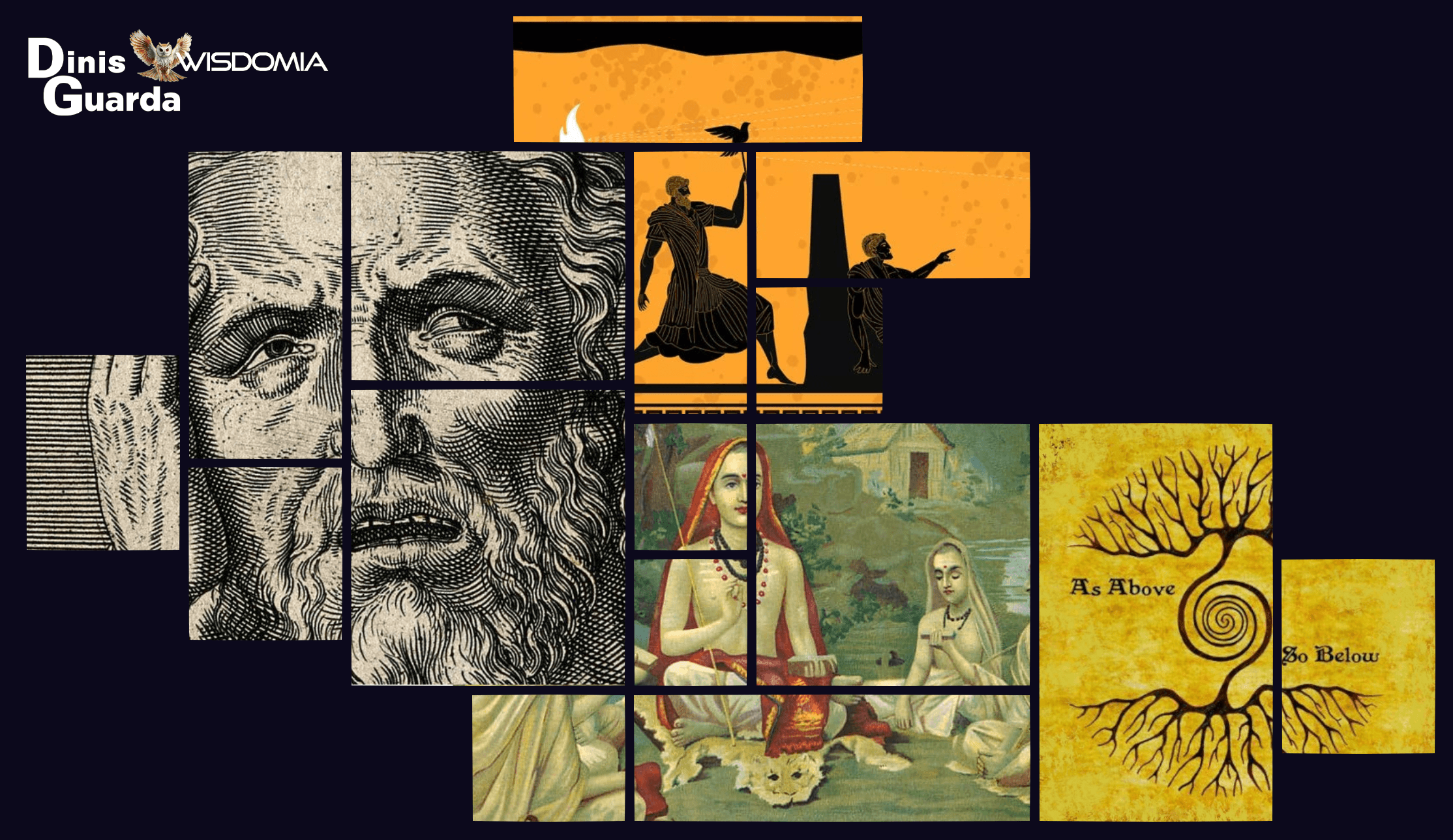
When Ancient Wisdom Met Quantum Physics: The Philosophical Synthesis

The Mirror Universe: Why Reality Reflects All Your Signals

Who Does What: The Stakeholder Action Plan for Universal AI Accessibility





